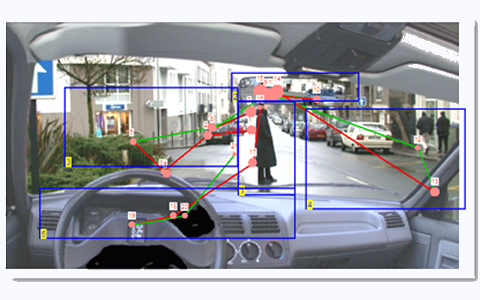Scan path analysis by Metrovision
- Home
- Visual function tests
- Eye movements
- Scan path analysis
Introduction
Metrovision's MonCv3 and MonPackONE systems are equipped with a near infrared, high resolution video sensor
which allows the binocular recording of eye movements.
The images of the eye are analyzed in real time (30 images per second or 200 with the high frequency camera)
to determine the direction of the gaze and the pupil size.
The direction of the gaze is "calibrated" to be superimposed to the image of stimulation by the fixation
of 5 reference dots.
The clinical applications of this program are numerous:
• study of reading and its dysfunctions,
• evaluation of neuro vision disorders,
• check-up and follow up of rehabilitation of hemianopsia and hemi neglects
• check-up and follow-up of low vision rehabilitation,
• evalution of driving aptitude
Methods
Metrovision's systems can display any type of image adapted for the study of eye gaze strategy: reading text, driving scenes, counting tests,…
Application to reading analysis
The analysis of eye scan path analysis during reading shows the positions and duration of fixations
(position and size of the red dots) as well as the saccades separating the fixations.
The program also determines the number of fixations and their average duration as well
as the number of saccades and their average amplitude in the reading direction and its opposite (retro saccades).
Application to the exploration of visual scenes
The analysis of eye scan path during the exploration of a visual scene shows the position and duration
of fixations (position and size of the red dots) as well as the sequence of fixations.
In the example of a driving scene, the program indicates which elements of the image have been looked at by
the subject and which were ignored.
.
The visual scene can also be divided into areas of interest. The program indicates the time before the first
access to each zone and the time of fixation within each zone.
References
PDFEye movements and verbal reports in neglect patients during a letter reading task.
PDFRefixation strategies in four patients with macular disorders.
PDFVisual dysfunction in children with reading problems.




